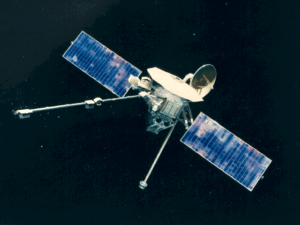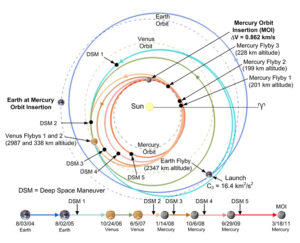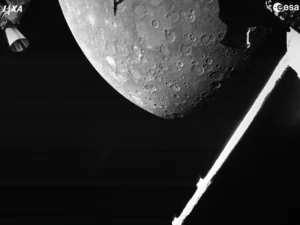Have you ever been close to someone yet couldn’t put your finger rightfully on what the person liked or disliked? Well, among all the other planets in the solar system, such a phrase is equally appropriate for Mercury. A planet, occasionally visible from Earth’s surface, yet we know so little about the same. There are not even a handful of missions launched to explore the rocky terrains of Mercury. Proving a space for questions “Why have NASA astronauts never landed on Mercury?” or “Reasons why Mercury is the least explored among the four planets in the inner Solar system?” Well, probably, it is the proximity of Mercury to the Sun which is the main reason. But yes, there are more on the list to focus on.
Why NASA Astronauts Never Landed On Mercury?
In 2011, NASA’s MESSENGER spacecraft entered the orbit of Mercury, capturing images and compositional data. For the first time, people on Earth got such a close view of the planet. But some wonder why it took so long for the astronauts to land on Mercury while NASA and other space centers have already been sending their probes to Jupiter and Saturn since the 90s. Here are some of the answers to the why part.
Too Close And Too Extreme
On being closest to the Sun, the Sunlight at Mercury is 10x intense than what one gets to experience from Earth. Most importantly, the planet’s rocky terrain radiates heat to outer space, which will cause two-way trouble for the astronauts to deal with.
The planet’s surface temperature is both hot and cold (on the extreme side). The day temperatures usually reach highs of 800°F (430°C). And at night, the lack of atmosphere leads to the temperature dipping as low as -290°F (-180°C).
Difficult To Keep A Tab On
Contrary to Venus, Jupiter, Saturn, and Mars, Mercury is the most difficult to keep track of from Earth. Being close to the Sun, Mercury sets and rises almost at the same time as that of the Sun. That way, astronomers only get a brief time to watch and analyze the planet before Sunrise and after Sunset.
There are telescopes to observe the planet during day time, but astronomers do need to take special care to avoid the intense rays of the Sun. Constant exposure to the Sun rays has the potential to damage the optics. For this reason, the Hubble telescope and the James Webb Telescope have never imagined looking at the Mercury out of concern of the sensitive optics getting damaged.
Hard To Reach
The planet’s proximity to the Sun proves the third reason “Why astronauts never landed on Mercury?” A spacecraft aiming to flyby or orbit at Mercury must deal with the Sun’s gravitational pull, besides the burning glaze. Also, Mercury takes only 88 Earth days to complete one rotation around the Sun. It travels in its orbit at a speed of 29 miles (47 kilometers) per second.
According to scientists, the planet’s lack of atmosphere makes it difficult for spacecraft to land on the surface. Owing to the given conditions on the planet, every step is quite challenging.
Mercury Expeditions So Far
While it is clear that the extreme conditions prove to be the reason “Why astronauts never landed on Mercury?” But so far, space scientists have launched two lander missions to the planet, capturing its whereabouts. And another one is currently making its way around the planet.
Mariner 10

3rd November 1973 marks the launch of NASA’s Mariner 10. It made three flybys around Mercury (Flyby 1: 29 March 1974, Flyby 2: 21 September 1974, and Flyby 3: 16 March 1975), revealing the craters and magnetic field.
MESSENGER

The first spacecraft to orbit Mercury. It captured the most perfect and elaborated picture of the planet than ever before. Also, the particular revealed Mercury’s unusually large core and the presence of water ice on the poles. Such revelations made scientists rule out the previous theories and develop new ones.
BepiColombo

The BepiColombo mission comprises two spacecraft riding together toward Mercury to study the planet from unique points. It is a joint mission by ESA and JAXA aiming to reveal the planet’s geophysics, composition, magnetosphere, atmosphere, and history. The BepiColombo mission launched on 20th October 2018 and has already completed its first flyby around Mercury on October 1st, 2021. It will continue the other scheduled flybys till 2025’s December.
Things You Need To Know About Mercury

Now that you have found out “why astronauts never landed on Mercury?” Let’s help you with some interestingly amazing facts about the planet.
- Mercury is the smallest planet in our solar system, slightly larger than the Moon on Earth. Also, the planet does not have its own Moon.
- Mercury’s surface is similar to Earth’s Moon, scarred by impact craters resulting from the collisions of meteoroids and comets. Certain craters are named after famous deceased artists, musicians, scholars, and authors. The list even includes the name of dance pioneer Alvin Ailey and children’s author Dr Seuss.
- Until 1965, it was believed that the same side of Mercury faces the Sun. But scientists did conduct an experiment bouncing radar waves from the surface of Mercury. The reflected signals each time did appear to have slightly shifted wavelengths. Thus proving that the planet was rotating on its axis.
- In 2015, MESSENGER was deliberately crashed on Mercury’s surface, ending the mission.
- The planet rotates at a very low speed on its axis. It takes 59 Earth days to complete one rotation. Unlike other Planets, there is no proper sunrise or sunset on Mercury. The morning Sun appears to rise on some parts of the planet, sets, and then rises briefly. At Mercury, 176 Earth days equal one complete solar day (a full day-night cycle).
So that is all “Why astronauts never landed on Mercury?” Even if the planet is a part of our solar system, the integral features of Mercury segregate the particular from others. And as time continues, researchers are counting on technological innovations to discover the remaining mysteries of the same.




